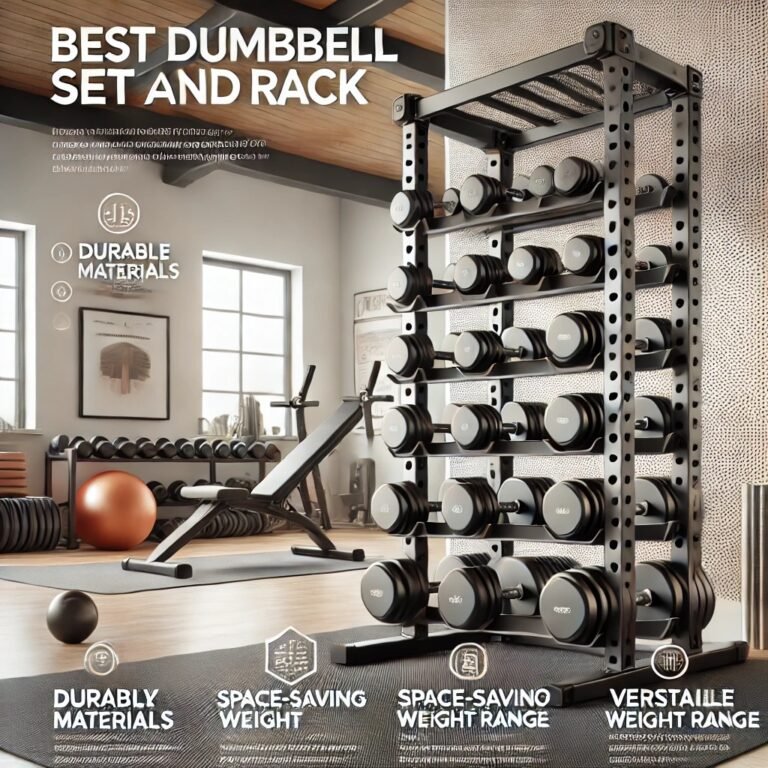Meditation is more than just a trend; it’s a powerful tool that can transform your life from the inside out. Whether you’re looking to reduce stress, improve your mental clarity, or even enhance your physical well-being, meditation offers a range of benefits for both the mind and body. This comprehensive guide will introduce you to the world of meditation, explore its various forms, and highlight how it can support your overall health. We’ll also delve into some surprising benefits, such as its potential impact on digestive health, and offer tips on choosing the right meditation accessories to enhance your practice.
In today’s fast-paced world, finding a moment of peace can feel like an impossible task. With constant notifications, endless to-do lists, and the pressures of daily life, our minds are often in a state of overdrive. It’s no wonder that so many people are turning to meditation—a practice that has been around for thousands of years—for relief. But what exactly is meditation, and why has it gained such popularity?
By the end of this guide, you’ll have a clear understanding of how to start your meditation journey and unlock its full potential. Whether you’re a complete beginner or looking to deepen your practice, this guide will provide you with the knowledge and tools you need to bring more peace, focus, and well-being into your life. Let’s begin this transformative journey together.
Table of Contents
What is Meditation?
Understanding the Basics: What is Meditation?
At its core, meditation is a practice that involves focusing the mind and eliminating distractions to achieve a state of mental clarity, emotional calm, and physical relaxation. It’s a simple yet profound technique that allows you to tune out the noise of everyday life and connect with your inner self. While meditation can take many forms, most techniques share common elements: a quiet space, a comfortable posture, a focused attention, and an open attitude.
Meditation is not about turning off your thoughts or feelings but rather about observing them without judgment. It’s about training your mind to stay present, enhancing your awareness of the moment, and developing a more mindful and compassionate approach to life. Through regular practice, meditation helps cultivate a sense of inner peace and well-being, which can positively impact your mental, emotional, and physical health.
A Brief History of Meditation Practices
| Meditation has been practiced for thousands of years, with its roots tracing back to ancient civilizations. Its origins are often associated with religious and spiritual traditions, particularly in India and China. The earliest documented evidence of meditation comes from the Hindu traditions of Vedantism around 1500 BCE. Meditation was later adopted by Buddhism, where it became a central practice for achieving enlightenment. Buddhist meditation techniques, such as Vipassana (insight meditation) and Zazen (seated meditation), have been practiced for over 2,500 years and continue to be popular today. |

In China, Taoist meditation emerged around the 5th century BCE, focusing on achieving harmony with nature and the cosmos. Meanwhile, in Japan, Zen Buddhism developed its own form of meditation, emphasizing the importance of mindfulness and direct experience over intellectual understanding.
Meditation spread to the Western world in the 20th century, largely due to the influence of Eastern philosophies and the growing interest in alternative wellness practices. Today, meditation is a secular and widely accepted practice, used by millions of people around the world to manage stress, improve mental health, and enhance overall well-being. Whether practiced in the context of religion, spirituality, or simply as a personal growth tool, meditation remains a powerful and timeless practice that continues to benefit people across cultures and generations.
What are the Different Types of Meditation?
Exploring the Different Types of Meditation
| Meditation is a versatile practice that comes in many forms, each with its own unique focus and technique. While all meditation styles aim to promote mental clarity and inner peace, the approach and experience can vary widely. Understanding the different types of meditation can help you find the practice that resonates most with your personal goals and lifestyle. Let’s explore some of the most popular meditation techniques and how they can benefit you. |
Mindfulness Meditation: Being Present in the Moment
Mindfulness meditation is perhaps the most well-known and widely practiced form of meditation in the modern world. Originating from Buddhist teachings, this practice involves paying attention to your thoughts, feelings, and sensations in the present moment without judgment. The goal is to observe your thoughts as they pass through your mind, cultivating a heightened awareness of the “here and now.”

To practice mindfulness meditation, find a quiet place to sit comfortably. Focus on your breath, noticing the sensation of air entering and leaving your body. As thoughts arise, acknowledge them without getting caught up in them, and gently bring your focus back to your breathing. Over time, mindfulness meditation can help reduce stress, improve concentration, and enhance emotional regulation, making it a powerful tool for mental well-being.
Transcendental Meditation: Reaching Inner Peace Through Mantras
Transcendental Meditation (TM) is a specific form of silent mantra meditation introduced by Maharishi Mahesh Yogi in the 1950s. Unlike mindfulness meditation, which focuses on awareness of the present moment, TM aims to transcend ordinary thought and reach a state of deep relaxation and inner peace. This is achieved by silently repeating a specific mantra—a word or sound—assigned by a certified TM teacher.
Practitioners of TM typically meditate for 20 minutes twice a day, sitting with their eyes closed and repeating their mantra. The repetition of the mantra helps to calm the mind, allowing it to settle into a state of restful alertness. Studies have shown that TM can reduce stress, lower blood pressure, and improve overall well-being. It’s a simple yet powerful practice that can be easily integrated into daily life.
Loving-Kindness Meditation: Cultivating Compassion
Loving-Kindness Meditation, also known as Metta Bhavana, is a practice that focuses on developing feelings of compassion, love, and goodwill toward oneself and others. The practice involves sitting quietly, closing your eyes, and repeating phrases that express positive intentions, such as “May I be happy,” “May I be healthy,” “May I be safe,” and “May I live with ease.”
After directing these wishes toward oneself, the practitioner extends them to others—starting with loved ones, then acquaintances, and even individuals with whom they have conflicts. The ultimate goal is to cultivate an all-encompassing sense of love and kindness. Loving-Kindness Meditation can help reduce negative emotions, increase empathy, and foster a sense of connection with others, making it an excellent practice for enhancing emotional well-being.
Guided Meditation: Following a Path to Relaxation
Guided meditation is a practice that involves following along with a guide, either in person or through a recording. The guide provides instructions and visualizations that help direct the practitioner’s focus and bring about relaxation. This form of meditation is particularly accessible for beginners, as the guidance helps maintain concentration and provides structure.

Guided meditations can vary widely in their focus and length, ranging from short sessions that promote relaxation to longer practices that aim to achieve specific goals, such as reducing anxiety or enhancing self-awareness. By engaging the imagination and focusing on positive imagery, guided meditation can be an effective way to de-stress, gain perspective, and foster a deeper sense of peace.
How to Meditate
Starting a practice can feel intimidating, especially for beginners. However, the process is simpler than you might think, and you don’t need any special equipment or experience to get started. Here’s a step-by-step guide to help you ease into your practice:
1. Find a Quiet Space
Begin by choosing a quiet place where you won’t be disturbed. This could be a dedicated room in your house, a cozy corner, or even a spot outdoors. The key is to find a location that feels calm and free from distractions. It’s easier to focus when you have a peaceful environment.
2. Get Comfortable
Sit in a comfortable position that allows you to relax yet remain alert. You can sit on a chair, on the floor with a cushion, or even lie down if that feels better. Keep your back straight but not tense, and rest your hands on your lap or knees. Comfort is crucial, as it helps you maintain your posture without straining.
3. Close Your Eyes and Breathe
Gently close your eyes and begin to breathe naturally. Focus on your breath as it flows in and out. Notice the sensation of air entering your nostrils, filling your lungs, and then leaving your body. There’s no need to control your breathing; just observe it. Focusing on the breath helps anchor your mind and provides a point of concentration.
4. Observe Your Thoughts
As you focus on your breath, thoughts will naturally arise. This is normal. Instead of trying to suppress these thoughts, acknowledge them without judgment. Imagine your thoughts as passing clouds in the sky, coming and going. When you notice your mind has wandered, gently bring your attention back to your breath. This process of noticing and returning is an essential part of the practice.
5. Use a Focal Point (Optional)
Some people find it helpful to use a focal point, such as a word, phrase, or sound, to maintain focus. You might repeat a mantra silently to yourself or listen to calming music or nature sounds. This can provide an additional anchor for your mind, making it easier to stay centered.
6. Start Small and Build Up
If you’re new to this practice, start with just a few minutes each day. Even five minutes can make a difference. As you become more comfortable, gradually increase the duration. The goal is not to achieve a specific amount of time but to create a regular habit. Consistency is more important than duration when building a practice.
7. End with Gratitude
When you’re ready to finish, slowly bring your awareness back to the room. Take a few deep breaths, stretch gently, and open your eyes. Take a moment to reflect on the experience and express gratitude for the time you’ve taken for yourself. This helps transition you back to your daily activities with a sense of calm and centeredness.
How Meditation Can Help You
Mental Health Benefits: Reducing Stress and Anxiety
In today’s hectic world, it’s common to feel overwhelmed and stressed. Engaging in a regular practice of mindfulness can significantly reduce feelings of stress and anxiety. By focusing on the present moment and observing thoughts without judgment, one can gain a sense of detachment from worries and concerns. This shift in perspective helps to calm the mind and lower cortisol levels, the hormone associated with stress. Over time, this practice can lead to a more relaxed state of being, making it easier to manage the challenges of daily life.
Emotional Wellness: Enhancing Your Mood
Consistently dedicating time to this practice not only improves mental clarity but also enhances emotional well-being. Focusing on positive intentions and self-awareness fosters a deeper understanding of one’s emotions. Techniques such as loving-kindness, which emphasizes compassion and empathy, can lead to increased feelings of happiness and fulfilment. Regular practice helps individuals develop a more positive outlook on life, increasing their ability to handle negative emotions and boosting overall mood. It’s like giving your mind a reset, which can leave you feeling refreshed and emotionally balanced.

Improving Focus and Concentration
In a world filled with distractions, maintaining focus can be challenging. Regular practice of mindfulness strengthens your ability to concentrate and stay present. By training your mind to focus on a single point of reference, such as the breath or a mantra, you enhance your mental discipline. This improvement carries over to other aspects of life, such as work or study, where sustained attention is required. Practicing regularly helps to clear mental clutter, making it easier to process information and make thoughtful decisions. Over time, this increased mental clarity and sharpness can improve productivity and enhance problem-solving skills.
How Meditation Can Improve Your Body
Physical Benefits: From Heart Health to Pain Relief
Engaging in mindfulness practices can have profound effects on physical health. Regular practice has been shown to lower blood pressure and improve heart health by promoting relaxation and reducing stress. This reduction in stress can lead to decreased inflammation and lower risk factors for heart disease. Additionally, focusing techniques can help manage chronic pain by altering the perception of pain in the brain. By increasing the body’s endorphin levels and changing how the mind responds to discomfort, many people find significant relief from persistent aches and pains.

Enhancing Sleep Quality
Quality sleep is essential for overall health, and practices centered around relaxation and mindfulness can play a crucial role in improving sleep patterns. By calming the mind and reducing the racing thoughts that often prevent sleep, one can fall asleep more quickly and enjoy deeper, more restful slumber. Techniques that promote deep breathing and present-moment awareness can prepare the body for rest, making it easier to transition from the busyness of the day to the quiet of the night. Over time, incorporating these practices into a nightly routine can help alleviate insomnia and lead to better overall sleep quality.
Boosting the Immune System
Regular practice of mindful relaxation and stress reduction not only benefits mental health but also boosts the body’s natural defenses. High stress levels can weaken the immune system, making one more susceptible to illnesses. By consistently engaging in activities that promote relaxation and reduce stress, the body can enhance its immune response. Studies have shown that individuals who regularly practice these techniques have higher levels of immune markers, which help fight off infections. This increased immunity supports overall health, helping to keep the body strong and resilient.
Meditation Accessories: Enhancing Your Practice
Choosing the Right Accessories: A Guide to Benches, Chairs, and Stools
Finding the right accessories can make a significant difference in the comfort and effectiveness of your practice. Benches, chairs, and stools are great options, especially for those who may find it challenging to sit on the floor for extended periods. A meditation bench typically allows for a kneeling position, which can take pressure off the knees and back, making it easier to maintain proper posture. Chairs designed specifically for meditation provide back support and promote an upright, alert position without straining. Stools offer a simple, compact option that elevates the hips, aligning the spine naturally. Choosing the right seat can enhance comfort, prevent discomfort, and help maintain focus.


Meditation Benches:
Meditation benches are designed to support a kneeling position, which can alleviate pressure on the knees and back. They usually have a slanted seat, which helps maintain a natural spine alignment, making it easier to sit comfortably for longer periods. This makes them a popular choice for those who find traditional floor sitting challenging.
Learn more about choosing the right meditation bench for your practice here
Meditation Chairs:
Meditation chairs provide back support while allowing the sitter to maintain an upright, alert posture. These chairs are typically designed to encourage proper alignment of the spine and are padded for extra comfort. They are ideal for individuals who prefer or need additional support during their practice.
Learn more about choosing the right meditation chair for your practice here
Meditation Stools:
Meditation stools are small, portable seating options that elevate the hips above the knees, helping to align the spine naturally. They offer a middle ground between floor sitting and full-sized chairs, making them a versatile choice for those seeking comfort and support.
Learn more about choosing the right meditation stool for your practice here.
Finding Comfort: The Best Mats and Cushions
Comfort is key to a successful practice, and using the right mat or cushion can significantly enhance your experience. A meditation mat provides a soft, supportive base, which is particularly beneficial if you prefer sitting on the floor. Mats can be paired with cushions to offer additional comfort and support. Zafus, traditional round cushions, elevate the hips, encouraging a natural curve in the spine and reducing strain on the knees and ankles. For those who prefer more cushioning, zabutons—larger, flat cushions—provide a wider area of support. Choosing the right mat and cushion combination helps you find a comfortable position that allows you to sit for longer periods without distraction.

Meditation Mats:
Meditation mats provide a soft, supportive surface for sitting, making floor-based practices more comfortable. They are typically used to create a defined space for practice and can be paired with cushions to enhance comfort. Mats are especially helpful for protecting the knees and ankles on hard surfaces.
Learn more about choosing the right mediation mat for your practice here
Meditation Cushions:
Meditation cushions, such as zafus and zabutons, are designed to provide elevation and support during practice. Zafus are round, firm cushions that help elevate the hips, promoting proper spinal alignment and reducing pressure on the knees. Zabutons are larger, flat cushions that offer a wide base of support, often used underneath a zafu. These cushions help make sitting for extended periods more comfortable.
Learn more about choosing the right mediation cushion for your practice here
Essential Tools for a Successful Practice
Beyond seating and cushions, there are other accessories that can enhance your experience and create a conducive environment. Blankets can be used for warmth or additional cushioning, ensuring comfort during extended sessions. Eye masks can help block out light, allowing for deeper focus and relaxation. Incense or essential oils can create a calming atmosphere with their soothing scents, helping set the mood for your practice. Using a timer with a gentle chime ensures you can practice without worrying about the time. Incorporating these tools can create a personalized space that supports a deeper, more immersive experience.
Does Meditation Help with Bowel Movements?
Can Mindfulness Practices Improve Digestive Health?
Mindfulness practices are known for their calming effects on the mind, but they can also have a significant impact on the body, including the digestive system. Stress is a major factor that can disrupt normal digestive function, leading to issues like constipation, diarrhea, and irritable bowel syndrome (IBS). By promoting relaxation and reducing stress levels, mindfulness exercises can help restore balance to the digestive tract. The practice encourages a state of rest and calm, which can stimulate the parasympathetic nervous system, also known as the “rest and digest” response. This shift not only eases tension in the gut but also can lead to more regular and comfortable bowel movements.
Mindfulness and Gut Health: What the Research Says
Research has increasingly shown a connection between the mind and the gut, often referred to as the gut-brain axis. Mindfulness and relaxation techniques have been found to positively affect gut health by reducing inflammation and improving gut motility. Studies suggest that regular engagement in these practices can help alleviate symptoms of conditions like IBS, where stress and anxiety often exacerbate digestive problems. By calming the mind and reducing the body’s stress response, individuals can experience less abdominal pain, bloating, and irregular bowel movements. While more research is needed to fully understand the mechanisms at play, current evidence supports the idea that these practices can be a valuable tool in managing and improving digestive health.
Frequently Asked Questions
1. How long should I practice daily to see benefits?
Starting with just a few minutes each day can lead to noticeable benefits. Many people begin with 5-10 minutes and gradually increase the duration as they become more comfortable. Consistency is more important than length, so aim to practice daily for the best results.
2. Do I need any special equipment or accessories?
No special equipment is required to start. You can practice simply by finding a quiet space to sit comfortably. However, using accessories like cushions, benches, or mats can enhance comfort and help maintain proper posture, especially for longer sessions.
3. Is it normal to have thoughts during practice?
Yes, it is entirely normal to have thoughts come up during your practice. The key is not to fight these thoughts but to acknowledge them without judgment and gently return your focus to your breath or focal point. Over time, this process helps improve focus and awareness.
4. Can this practice help with anxiety and stress?
Absolutely. Engaging regularly in these practices can significantly reduce anxiety and stress. By encouraging relaxation and promoting a sense of calm, they help to lower stress hormones and bring a sense of balance to the mind and body.
5. How soon will I see results?
The timeframe for experiencing benefits can vary from person to person. Some people may feel a sense of calm and relaxation after just one session, while for others, it may take a few weeks of consistent practice. Patience and consistency are key.
6. Is it okay to practice lying down?
Yes, you can practice lying down, especially if you’re focusing on relaxation or using techniques to help with sleep. Just be aware that lying down might make you more prone to falling asleep, so if the goal is to stay alert, sitting might be a better option.
7. Can children benefit from these practices?
Yes, children can benefit greatly from mindfulness practices. Techniques can help them develop focus, manage emotions, and cope with stress. Practices can be adapted to be fun and engaging for kids, making them accessible and enjoyable.
8. Do I have to follow a specific religious or spiritual belief to practice?
No, these practices are secular and can be adopted by anyone, regardless of religious or spiritual beliefs. While they have roots in various traditions, they have been adapted for general well-being and personal growth.
Conclusion
Incorporating meditation into your daily routine can be a transformative experience for both your mind and body. Whether you’re looking to reduce stress, improve focus, or enhance your overall well-being, this practice offers numerous benefits that can positively impact your life. Starting with simple techniques and gradually exploring different forms, such as mindfulness or loving-kindness, allows you to find what resonates best with you.
To deepen your practice, consider investing in accessories like a meditation stool, bench, mat, cushion, or chair. These tools are designed to enhance comfort and support proper posture, allowing you to focus fully on your practice without discomfort. A meditation stool or bench can provide the perfect alternative for those who find traditional sitting positions challenging, while a meditation mat and cushion offer a soft, supportive surface that encourages relaxation. For those who prefer additional back support, a meditation chair can be an ideal choice.
No matter where you start, remember that meditation is a personal journey. Find what works best for you, create a space that feels inviting, and approach your practice with an open mind and a compassionate heart. With patience and consistency, you will unlock the many benefits of this ancient practice, leading to a more peaceful, balanced, and fulfilling life.
View all Meditation Accessories on Amazon Here:






One Comment
Comments are closed.